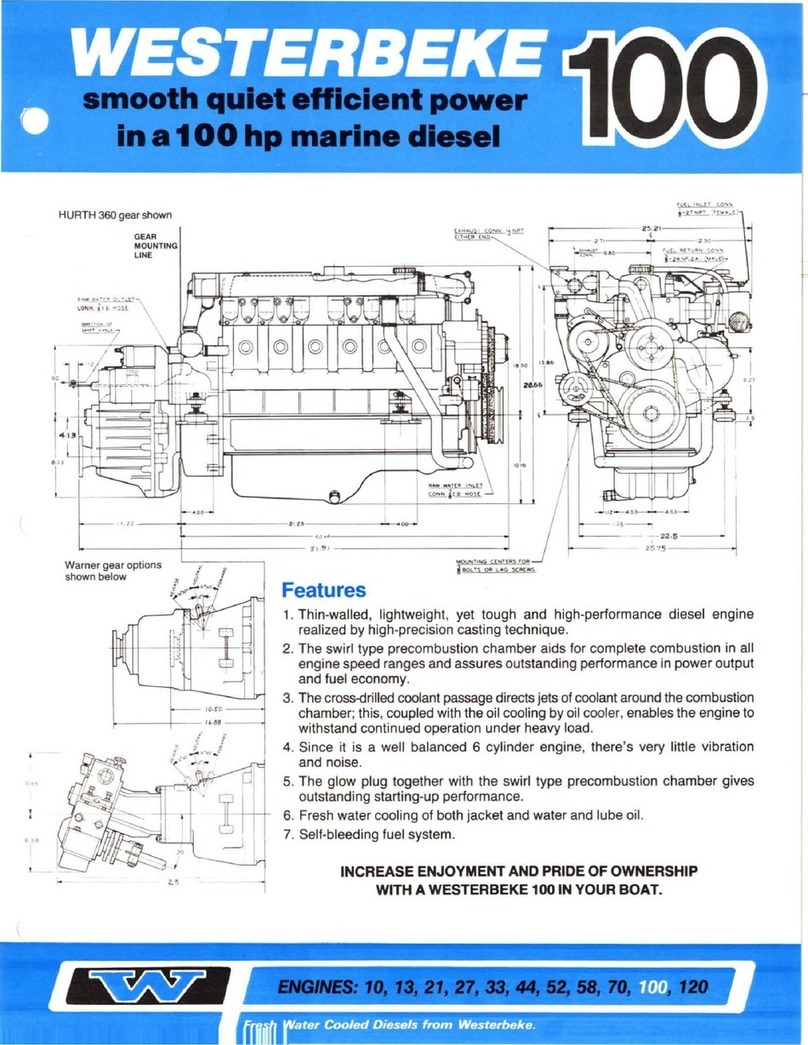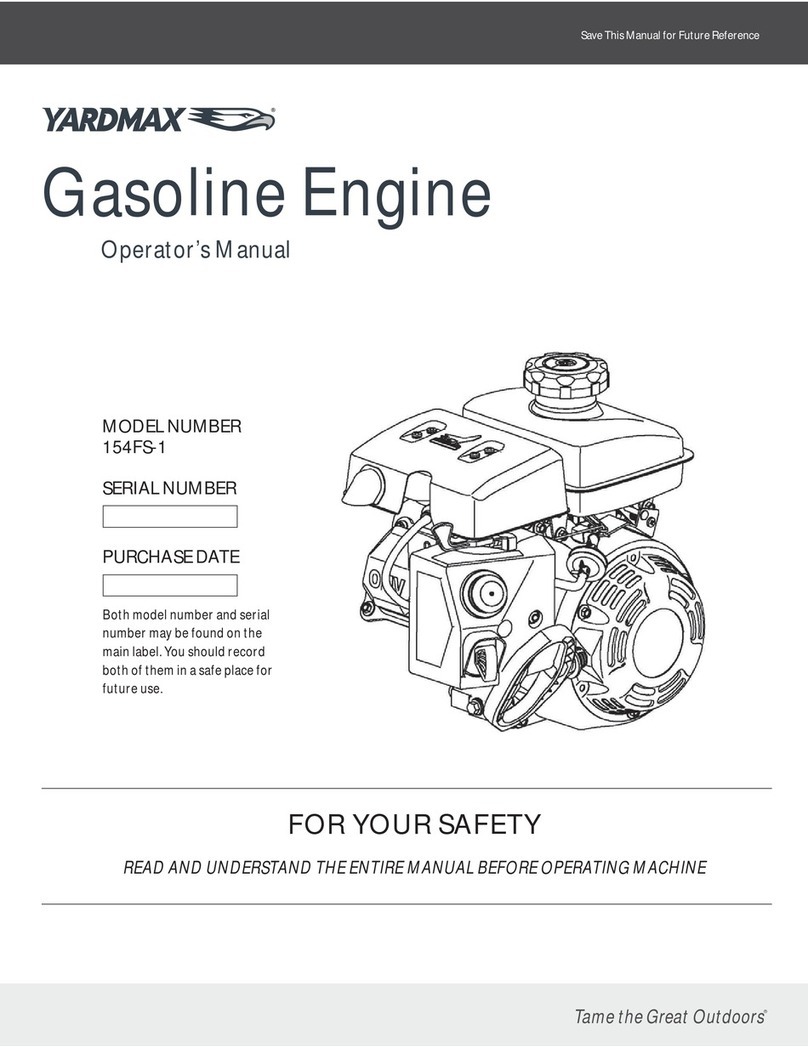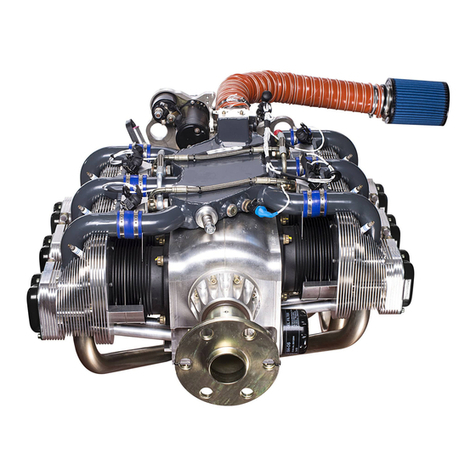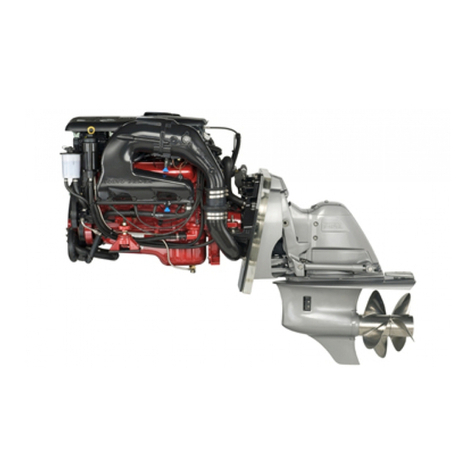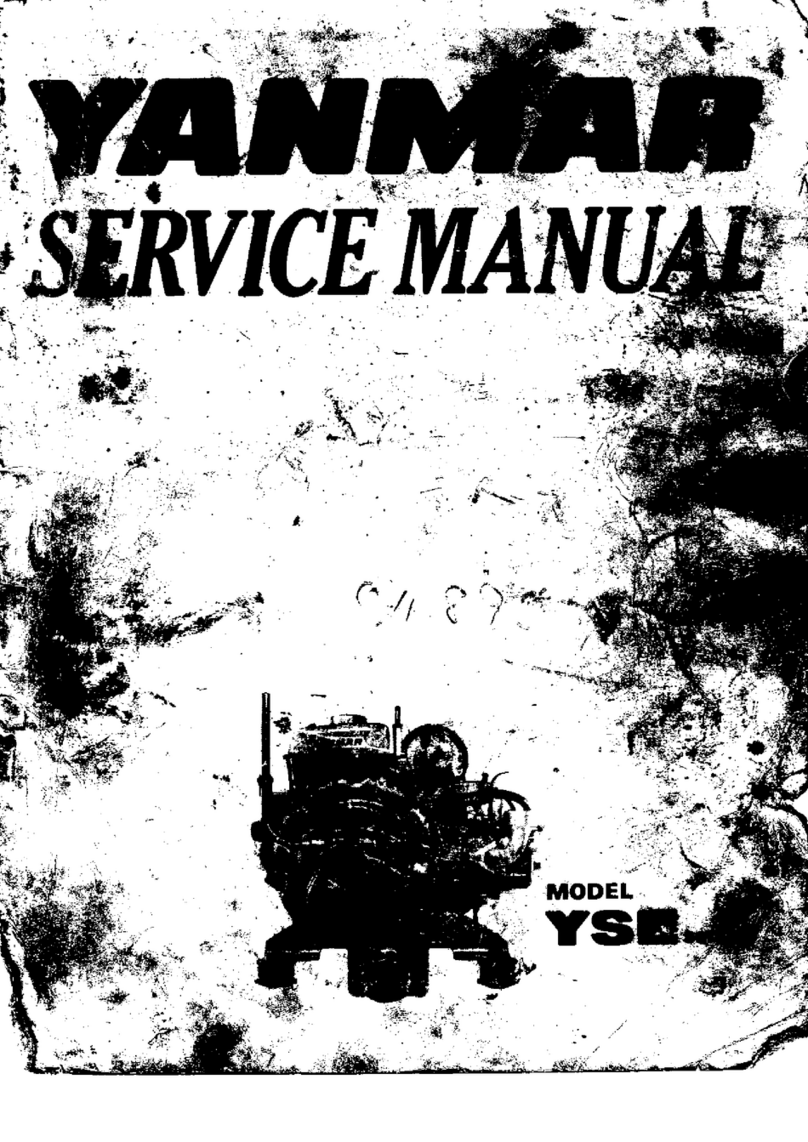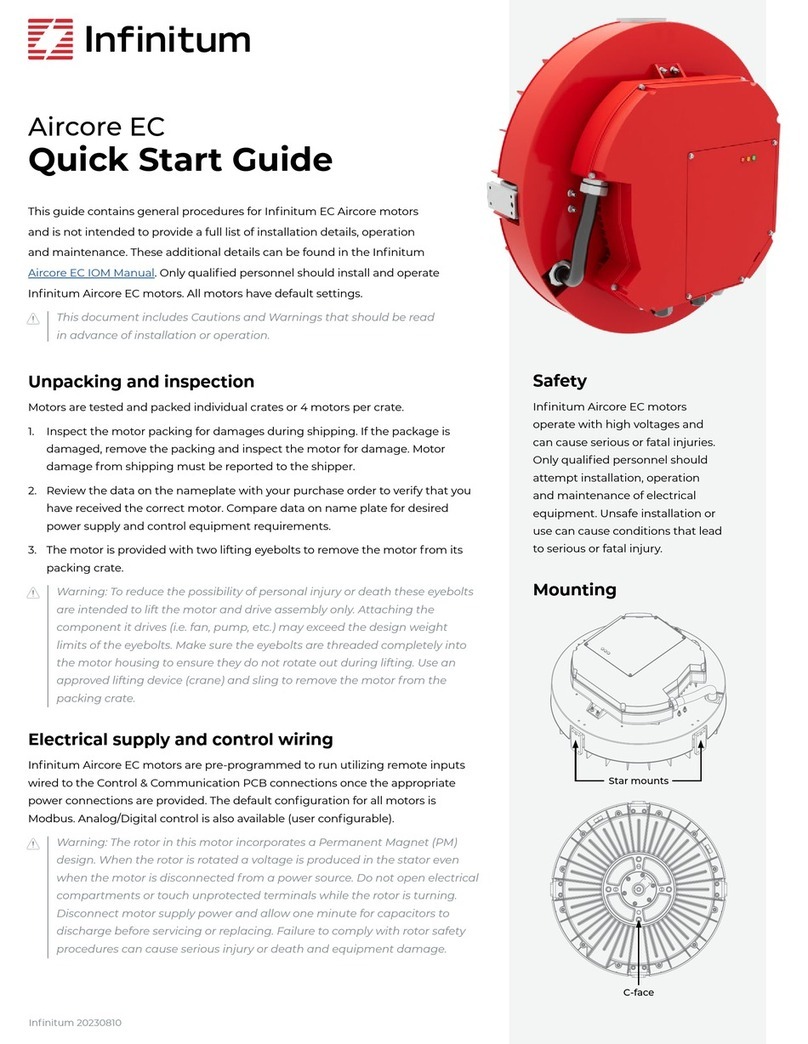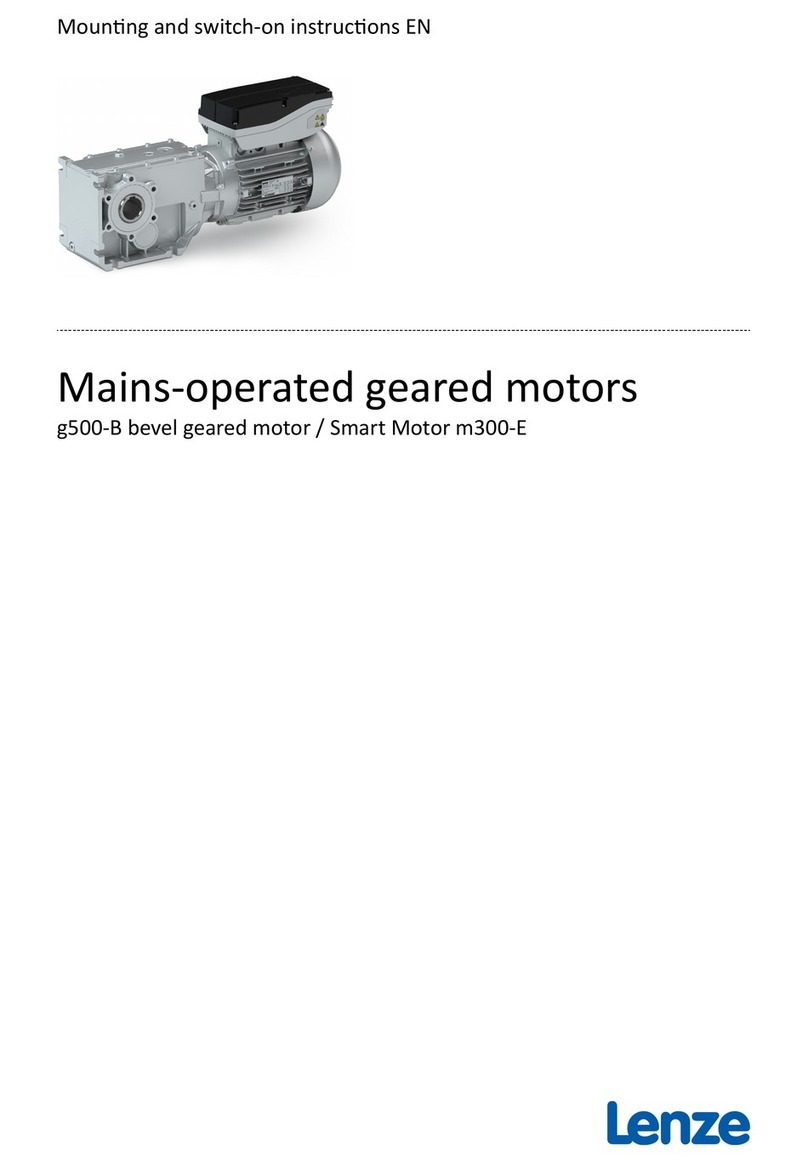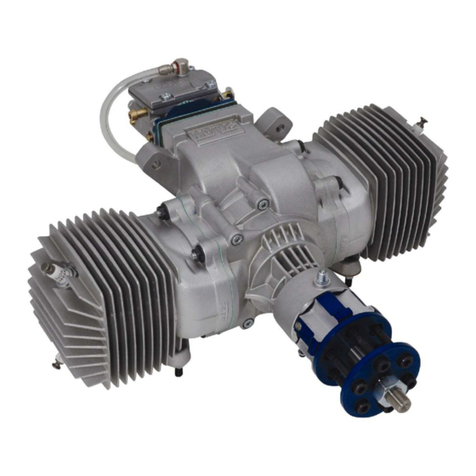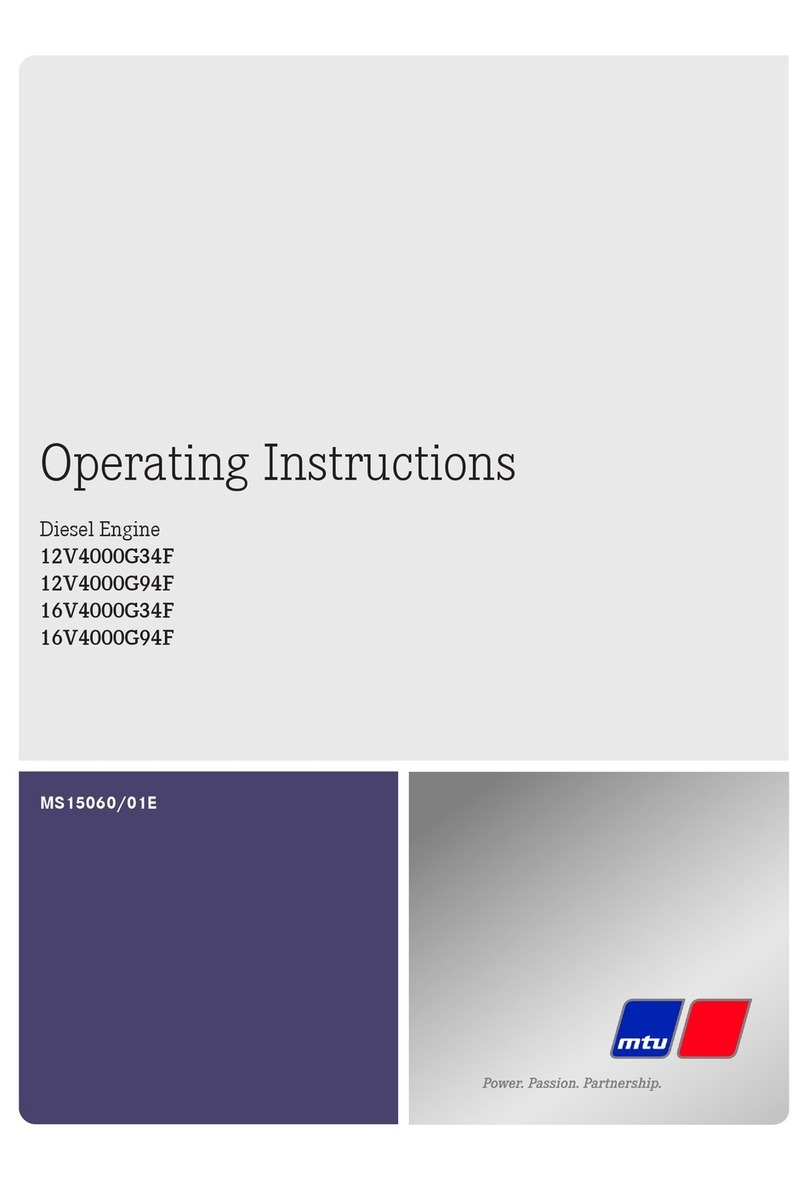Beavertail VANGUARD 35 User manual

411 West Congress St
Maple Lake, MN 55358
1-877-466-8837
www.explorebea ertail.com
Surface Drive Owners Manual
Please read the owners manual and the engine manual before
operating the motor.
Notice: The engine is shipped without oil. Please fill with oil
before starting the engine. We recommend using synthetic oil for
optimum performance. A high quality SAE 10W-30 oil may also
be used. The 35 and 40hp motors will take about 80oz (2 1/2qts)
and the 27hp will take about 64oz (2qts).

WARRANTY
FOR VANGUARD 35
KOHLER 27 & 40
Two years: the engine manufacturer pro ides a warranty on the engine, as stipulated in the owners manual.
If you need ser ice, locate an engine mfg ser ice center in your community or contact the engine mfg for a
ser ice center location.
Bea ertail warrants that the frame and dri e is free from defects in material and workmanship, assuming
normal use, for a period of one year from the date of purchase. Warranty does not co er lack of lubrication,
normal wear, collision, abuse or mistreatment, or lack of maintenance.
If a defect occurs during this period, contact your nearest dealer or Bea ertail with a dated proof of
purchase. You will be directed where and when to take your equipment for inspection and or ser ice. It is
the customers responsibility to present the equipment to the repair center for repair. Repair sequence and
completion dates are set by the ser ice center. If frame or dri e parts are required to complete authorized
warranty work, Bea ertail will ship them at no charge. Expedited shipping is the responsibility of the
customer. If warranty work is denied due to lack of lubrication or maintenance, collision, abuse or
mistreatment, the customer may appeal to Bea ertail for re iew. We will do e erything reasonable to assist
the customer.
Except for the expressed warranty of Bea ertail set forth abo e, Bea ertail grants no other warranties,
expressed or implied, by statue or otherwise, regarding the Bea ertail surface dri e motor, its fitness for
any particular purpose, its quality, its merchantability, or otherwise. The liability of Bea ertail under the
warranty set forth abo e shall be limited to the fair market alue of the product at time of warranty claim.
In no e ent, shall Bea ertail Manufacturing be liable for any special, consequential, or other damages for
breach of warranty. Bea ertail has the right to change the product design at anytime without any obligation
under this warranty.
Your Bea ertail motor is designed to last you many years with proper care and use. Warranty items are
repaired by authorized Honda, Vanguard, or Kohler engine repair centers and the dri e/frame by Bea ertail
ser ice centers. You are important to us, so call whene er you ha e questions or need assistance. Many
owners prefer to repair their own mud motors and we will promptly send parts by regular ground when
needed .Express shipping is also a ailable, but this expense is the responsibility of the owner.
THANK YOU FOR PURCHASING A BEAVERTAIL PRODUCT.
This owner’s manual contains the necessary information you will need to unpack, install, operate and
maintain your Bea ertail backwater motor. Safety is key to operating any motorized equipment. READ
THE WARNINGS IN THIS OWNERS MANUAL, THE CAUTION LABELS ON THE ENGINE AND
ITS MANUAL BEFORE RUNNING YOUR BEAVERTAIL MOTOR.
SAFETY
-Read these safety precautions before operating your Bea ertail boat and motor.
-Always attach the safety lanyard to your self while operating the Bea ertail motor. Unclip the safety
lanyard from the switch or depress the red button each time you run the engine to ensure it is working
properly. The engine should stop immediately when the red button is depressed, or the safety clip is
remo ed from switch.
-The Bea ertail boat and motor can be operated from the sitting position. If you stand, use a stand-up bar to
maintain your balance. Protect the safety of passengers.
-Always wear a coast guard appro ed flotation de ice.
-Keep body parts and clothing clear of all mo ing engine components, the dri e shaft, and propeller.
-Do not operate your Bea ertail boat or motor while others are standing near the out dri e.

-Use extreme caution while operating your motor particularly when it is out of the water and on the boat or
on a storage stand. Ne er clean the engine or frame while the engine is running.
-The engine and muffler can become extremely hot and cause se ere burns. Do not operate the engine in an
enclosed area. Exhaust gases can cause se er injury and death.
-Our ideo DVD shows professionals running Bea ertail boats and motors. Do not attempt to run your
boat and motor in this manner without the proper training and experience.
OPERATION AND BREAK-IN
-Prepare the engine for starting: read your engine owner’s manual. Obser e break-in precautions. Do not
o er-re the engine during the first couple hours. Do not break-in the engine on the trailer. The dri e
bearings and seals should be run in the water for the first couple hours. Howe er, you can start the engine
and let it warm up a few minutes out of the water during the break-in period.
-Starting the engine: READ THE SAFETY PRECAUTIONS IN THIS OWNER’S MANUAL BEFORE
STARTING.
-First, pull out the choke. Put the clutch switch in the center position for starting if equipped with an
electric clutch. Ensure e eryone is clear of the engine and propeller. DO NOT LEAVE A RUNNING
ENGINE UNATTENDED.
-On the water: This is where your fun begins. E en though the motor is built tough, it is the owner’s
responsibility to know its limits and protect the dri e from se ere impacts. Also, we want you to enjoy
yourself, but ask that you be safe, courteous to others and en ironmentally sensiti e. Some waterways are
protected by en ironmental laws, so know these before you go. The Bea ertail boats and motors will go
places other boats cannot, so make sure you let others know your destinations, and when you will return.
Carry a mobile phone and tra el with others whene er possible. Bring a push pole in case you get stuck.
-Caution: ne er place the propeller in the water at high engine speeds with clutch engaged, particularly
when the dri e shaft is off to the side of the boat. This is true of any outboard motor. The boat can lurch
forward or spin and expel the operator and passengers.
-Our website and DVD’s show mud motors running in different conditions. The operators in our ideos are
professionals. Do not operate your mud motor in this manner without the proper training and experience-be
careful and protect your passengers.
-With the engine set at idle, either engage the clutch, or lift the handle and or use the power tilt and trim to
lower the propeller in the water directly behind the boat. You will now be mo ing forward.
-Start off slowly and soon you will learn new ways of using the motor to propel your boat in and out of
places you ne er dreamed possible.
-Steering the boat is made easy by pushing or pulling the handle. You can also lift and place the propeller in
and out of the water as needed to maneu er through egetation and mud.
-The power tilt and trim is used to set the optimum dri e angle when running. Through experience, you will
find the best trim angle for your boat, motor and load. Normally, the propeller blade is slightly out of the
water when running full speed for best performance. A small rooster tail will be present when running near
the surface. This is usually the best position for running full throttle. Be careful when trimming up so that
the propeller does not come too far out of the water which can cause the propeller to run across the water
surface and cause excessi e push on the handle. If the handle pushes into you while running full throttle,
you can reduce prop torque by mo ing the engine one inch away from you. If this does not remedy the prop
torque, bend the lower end of the skeg in the direction it is bent. Do this with a rubber hammer or wood
block and hammer. Do not o er bend or bend back and forth which can cause weld failure. Bend ¼” at a
time for best results. After adjustment, use the bolts pro ided to bolt the motor to the transom.
-When operated at high speeds, the normal operating RPM is 3800 to 4000 RPM.
Maintenance
You will need a hand held grease gun, filled with a good quality marine-grade wheel bearing grease. You
can find the grease at any major auto parts store.
E ery 5 hours grease the frame pi ot.
First 10 hours- check belt tension. Grease the frame swi el points. Grease both ends of throttle cable.
Tighten prop nut.

First 50 hours- Grease the out dri e assembly and swi el points. (see instructions below)
E ery 100 hours or once per year- Grease the dri e assembly.
The dri e tube is filled with grease from the factory. In addition to the abo e lubrication schedule, e ery
two years or 200 hours, remo e the propeller and lower bearing cap. (Note: the bearing cap is left-hand
threaded. Turn clockwise to loosen.)
Throttle: Lubricate the throttle cable with WD-40 or non-freeze silicone a ailable at most Napa stores. Coat
the throttle cable with grease near the engine and throttle cable and deters freezing. Ele ate the throttle
cable near the throttle by securing with two wire ties. The ele ated cable will keep water from entering.
This is ery important.
Engine oil and filter should be replaced according to the engine manufacture’s instructions. Change the oil
and filter at the end of the season. Acids accumulate in the oil and if not drained, can cause internal pitting
if left in the crankcase for extended periods. Co er the engine when in storage. This keeps the engine,
wiring and mechanical parts dry, and pre ents oxidation and corrosion.
IF YOU OPERATE IN SALT WATER; WASH DOWN THE DRIVE AND ENGINE AFTER EVERY
TRIP.
The frame is coated with a marine grade powder coating and easily cleaned with soap and water. If you use
a high-pressure washer, do not direct the spray at any area containing a seal such as the propeller, upper
dri e between engine and out dri e, throttle or switches. The pressure will dri e dirt and grime into the
seals and parts and cause premature failure.
Storage: At the end of the season, and for extended periods of storage beyond one month, the fuel should be
run out of the carburetor, and treated with a gas stabilizer. THE MOST COMMON CARBURETOR
PROBLEMS OCCUR BECAUSE THIS SIMPLE PROCEDURE ISN’T FOLLOWED. NOTE. ALL
ENGINE MANUFACTURERS DO NOT WARRANTY FUEL RELATED PROBLEMS. USE A GOOD
GRADE OF FUEL, 87 OCTANE OR BETTER.
Ensure the ent screw located on the fuel gas cap is open. If closed, pressure can build which causes fuel to
be pushed through the carburetor into the crankcase. O er time, this dilutes the oil and can cause engine
failure. Do not add a fuel tank quick disconnect, which can restrict fuel and cause poor top end
performance. You may add a primer bulb but turn the ignition switch on before pumping to a oid damaging
the carburetor electronic shut off al e.
PROPELLER INSPECTION AND REMOVAL
Notice: The hex prop can be at times difficult to remo e. Do not use excessi e force to remo e the
propeller. Tap slightly with a block of wood or hammer, and you can heat to 200 degrees with propane
torch. Do not pry with a screw dri er because this can cause dri e damage. If it does not budge, call us for
a hex prop remo al tool.
CAUTION- PROPELLER CONDITION: The most common reason for dri e failure is a damaged
propeller. Worn or bent props will decrease performance, and can also damage the dri e unit. Your prop is
12.25” new. If 11 ½ or smaller, replace the propeller for best performance. Replace and or repair the
propeller when it shows signs of damage or excessi e wear. Lack of power or reduced thrust in mud is an
indication of prop wear. We do not straighten or rebuild props. Some shops do, we suggest you use factory
fresh new propellers.
-Check the prop by first warming the engine, then run the engine at full speed out of water and obser e the
skeg. BE SAFE AND CAREFUL. If it ibrates excessi ely, or turns into a blur, replace the prop
immediately to pre ent dri e and frame damage. If the problem persists with a new propeller, you may
ha e a bent dri e shaft. Do not run without further ser ice. Check the shaft when you remo e the
propeller. Again, BE CAREFUL. Run the engine at an idle checking the shaft for straightness. notice the
small gap between the bearing cap and dri e shaft. Watch the shaft as it rotates. If the shaft is bent, it will
wobble from side to side. If bent, ha e the dri e inspected by a ser ice center and replaced immediately.
NOTE: BENT DRIVE SHAFTS ARE CAUSED BY SEVERE IMPACTS AND NOT COVERED BY
WARRANTY.
-Be careful when remo ing a worn prop, the edges can be ery sharp.
-Clean the hex shaft or threads with a wire brush and coat with marine grease or ne er seize prior to

installing a new prop. Install the nut carefully to 240 inch pounds.
BELT TENSION OR BELT REPLACEMENT
You can check the belt tension without remo ing the clutch co er. Simply remo e the side access plug on
the right side of the casting. With the tool inserted into the access hole, and tension tool in the palm,
obser e the scale alongside the tension gauge and pick a point on the casting for reference. The objecti e is
to depress the belt in its center : (not along the edge of belt because this will twist the belt rather than push
the center) and then note how many pounds, as indicated by how far the small o ring mo ed, it took to
mo e the belt the ¼”. new belts are tensioned at 16 to 20 pounds, used belts should measure 12 to 16
pounds. If less than 12 pounds, tension the belt.
Belt Tension:
The Gates belt is tightened by adjusting the bolt on the belt tension idler pulley. The belt tension
adjustment bolt is located on the left side of the case. We highly recommend you place thread penetrating
oil on the adjustment bolts threads 24 hours prior to adjusting the belt. A corroded bolt (especially if run in
salt water) can jam and e en break off.
NOTICE: We use the highest quality stainless bolts. Howe er, we do not warranty bolts that are corroded
and break off. This is a customer maintenance item.
-Remo e the face bolts from the upper dri e co er
-Loosen the idler pulley bracket bolt.
-Now, tighten the belt by turning the adjustment bolt. Check tension each time you turn the bolt one turn. It
does not take much to tension the belt. Once adjusted to the correct tension tighten the idler pulley bracket
bolt.
-Run the engine a couple minutes and recheck the belt tension. Tension again if needed.
- Apply sealer to the top case and bolt the co er on.
Belt Tension
adjustment bolt
Idler Pulley Bracket
Bolt

BELT REPLACEMENT
-REMOVE THE UPPER CASE COVER AND LOWER DRIVE CASE BOLTS WITH A 5/8” WRENCH.
-Clean the silicone sealer off the co ers . Do not scrape it is not necessary to remo e all the silicone, just
the large and thicker pieces. Put new sealer on the bottom case first which will fill any gaps. Wait to place
sealer on the top case until the new belt is in place and the bottom co er is installed.
-Place a new belt on the lower sprocket and slip the belt up and o er the top sprocket, being careful so you
don’t wipe the silicone sealer from the bottom of the case.
-Insert bolts and tighten the bottom co er. Now tension the belt by tightening the idler pulley adjustment
bolt as described abo e. Turn the propeller to ensure the belt and sprockets are engaged before tensioning
the belt completely.
-When the belt tension is between 16-20 lbs check the belt alignment by rotating the prop se eral times.
The belt should be aligned on the clutch pulley. If it is either too far out or in, the bottom sprocket will
need to be adjusted in or out on the shaft. This is done by remo ing the two allen head bolts and then
inserting one into the third empty hole and tightening into the hole. The pulley will then be able to be
mo ed on the shaft. Once the pulley is adjusted the allen head bolts should be inserted back into the taper
lock and tightened.
-The dri e should be waterproof. We recommend putting sealer on any bolts that are remo ed.

Operation
- Before starting the engine, be sure the area around the prop is clear and the clutch is in neutral. The clutch
and engine are wired so that the engine cannot start if the clutch is engaged or in the on position.
-The momentary clutch position is useful when maneu ering to load the boat, coming up to dock, motoring
in tight quarters, etc.
- When starting out the prop should be slightly below the water and the engine should be at an idle. Do not
engage the clutch at higher rpm’s as this can damage the clutch and is not co ered under warranty.
-The engine go ernor should be adjusted to run between 3800 and 4000 full throttle rpm under no load for
peak performance on the water.
Raise
Lower
On
Momentary
y
Neutral
Tilt and trim switch
Electric
Clutch
Switch
Kill Switch

When trailering the motor make sure it is trimmed all the way up and the tra el lock is locked into place.
There should be no mo ement in the motor. The tilt and trim should be in the up position when trailering to
a oid any mo ement of the motor. Failure to do so can result in se ere damage to the frame and is not
co ered under warranty.
When installing the motor on the boat the transom plate should be installed between the boats transom and
the transom bolts.
Transom plate
Alignment tab

Install handle on the motor with the three bolts, nuts and washers as shown abo e. The bolts should be snug
but allow the handle some mo ement up and down. This helps to absorb the shock from hitting
obstructions.
Lubricate motor pi ot e ery 5 hours of operation using a quality marine grease.
Grease zerk

Lubricate the prop dri e e ery 100 hours or once per year. Fill the tube until the grease comes out of the
inspection hole.
Grease zerk
Inspection hole
This manual suits for next models
2
Table of contents
